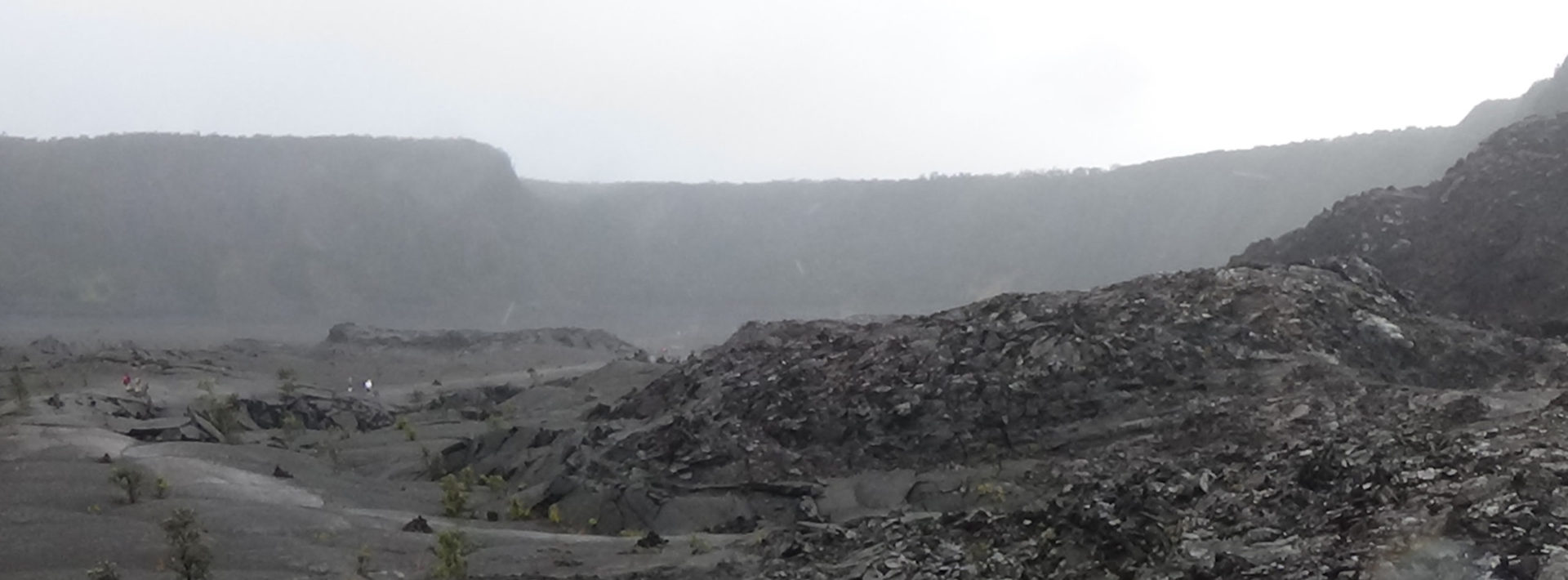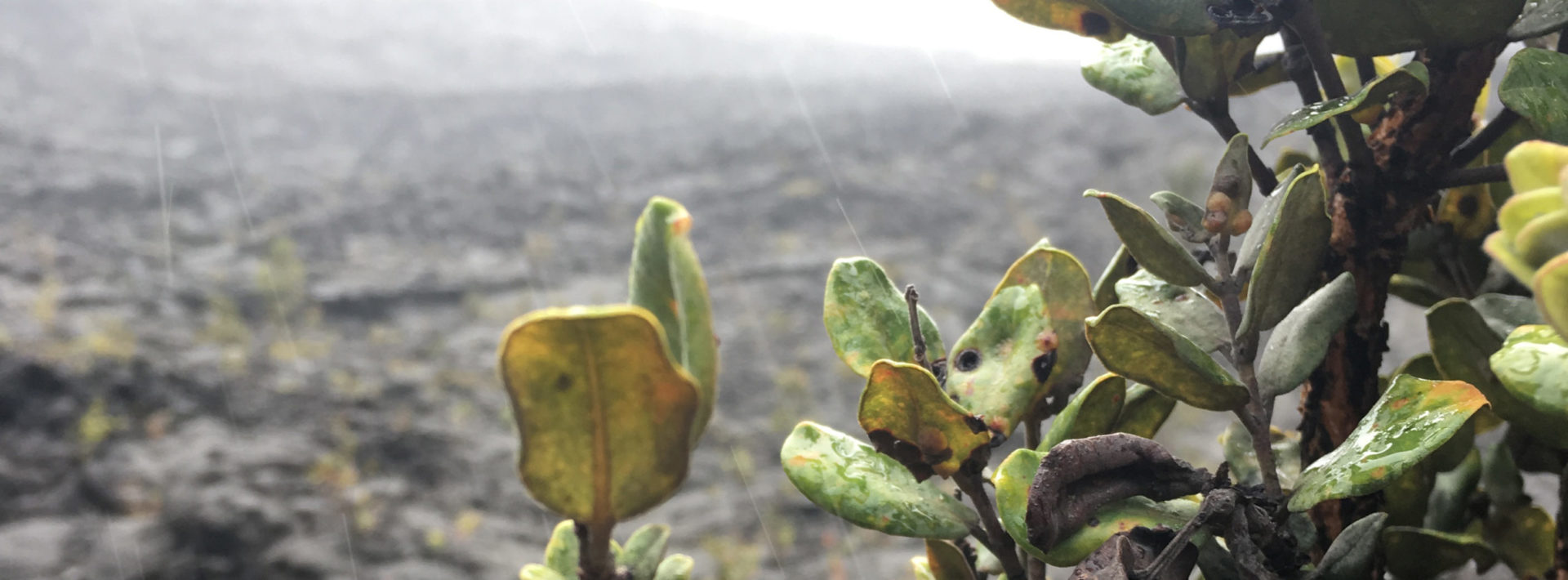TREX 2018 Day 3: In the Crater

By Joey Noszek ‘20
Before this trip, I was horribly afraid of the inevitable jetlag that would result from flying from Boston to Hawaii. I anticipated a state of utter confusion in which my body and mind would constantly be arguing over what the actual time was. I was scared. Fortunately, all of this anxiety was meaningless. Jetlag has been a beautiful thing for me. While I am not a fan of this newfound inability to stay up late, I am elated that I can awaken around 7:00 AM and not feel any pain from doing so. Honestly, it seems that my body was already set to Hawaii Time and it has finally found a clock that agrees with it. So when we left for a hike around 9:15 this morning, I was ready and willing to go out into the world and experience Kilauea with my clearest perception.
The Kilauea Iki trail goes around and through the Kilauea Iki crater. It begins hundreds of feet above the bottom of the crater, which allows one to observe the crater’s sheer vastness. Despite being able to see the crater for a while, I did not notice the strangest part of this place until I stepped onto Kilauea Iki’s surface. The crater, with a rocky floor, patches of lichens, and a few scattered plants, has the appearance of a barren wasteland. However, it is surrounded by a vibrant, dense tropical rainforest. This is explained by history.

In 1959, Kilauea Iki erupted and a pool of lava was formed. Since then, the lava has hardened and ecological succession has begun to take its course. The area, immediately surrounding the crater, while further along than the crater, has not yet completed the succession, as is made apparent by the high prevalence of ferns.

Walking through the crater, I had the unique opportunity to experience an element of Hawaii’s climate firsthand. Yesterday, at the air quality station, we were informed that Kilauea contributed to Hawaii having rather strong acid rain. Today, in Kilauea Iki, Professor Ben Kocar picked up a piece of volcanic rock and decided to demonstrate its lightness by tossing it to me. It certainly was light, but it had a sharpness that the professor did not consider. Catching this rock resulted in a small cut in my right thumb. It was a tiny cut and it did not hurt at all by itself. However, we were in a rainforest and it did rain. Normally, water on a cut would create a cool, relaxing sensation. This rain was so acidic, though, that it burned when it landed on my cut. It was only a slight burn, but it was enough to make me realize the power of the acid, the same power that creates holes in tin roofs and rusts locks beyond repair.
Every year, a group of MIT students and professors travel to the Big Island of Hawaii to gain fieldwork experience through TREX (Traveling Research Environmental EXperiences). The first TREX trip was held in 2000, and since launching has taken students on research activities in domestic and international settings. For more undergraduate opportunities, click here.



